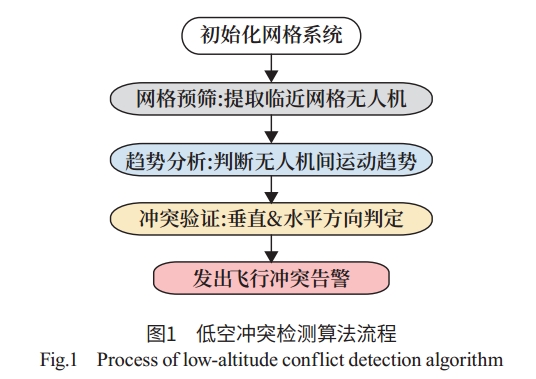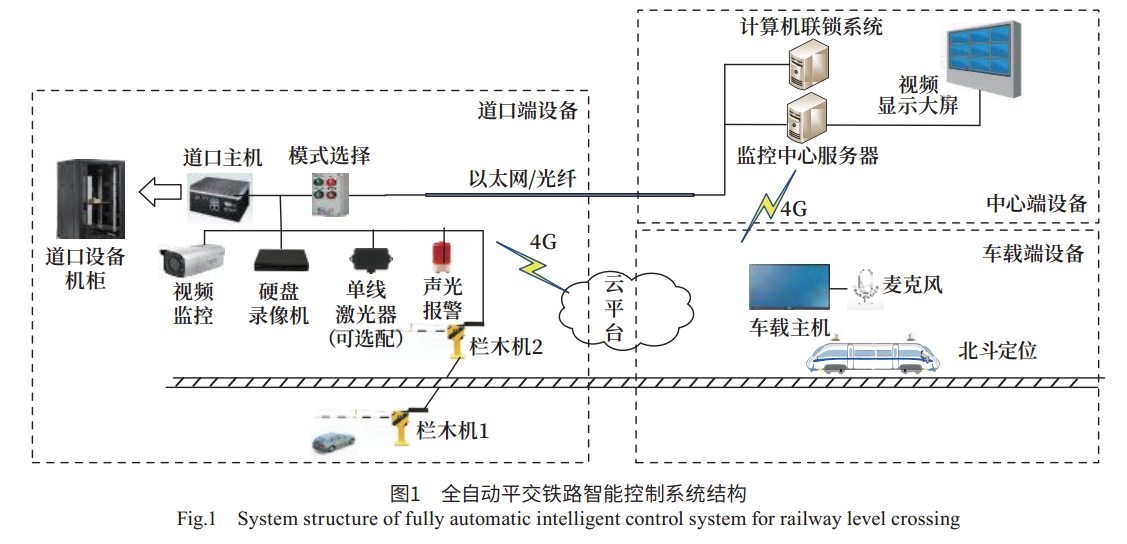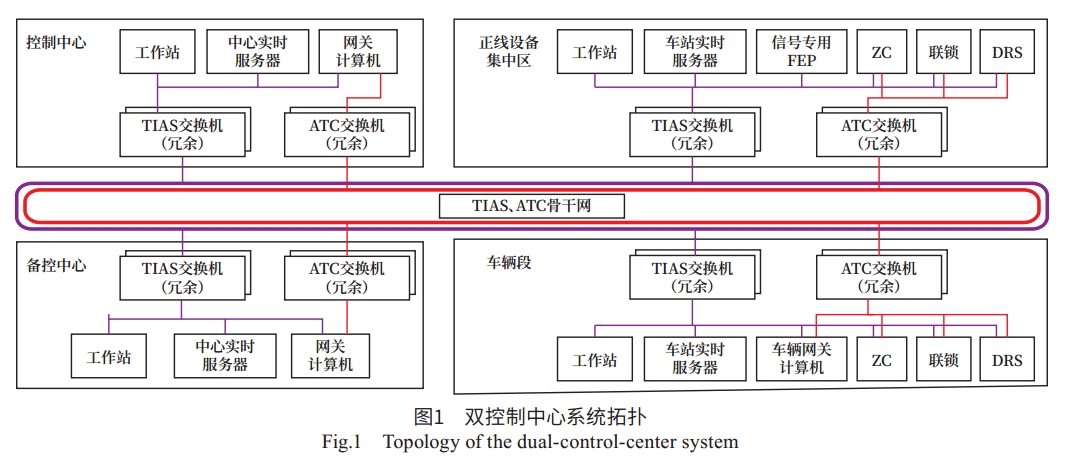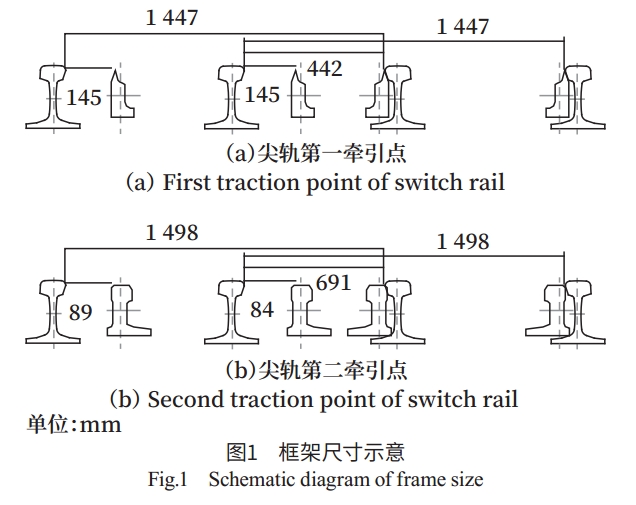Welcome to Railway Signalling & Communication Engineering,
Today is
中文
Current Issue
-
Research on Safety Guarantee Technology in “Zhuque” Low-Altitude Air Traffic Management Platform
-
Gao Chunhai, Chen Lei, Liu Chao, Shi Bo
-
2025 Vol. 22 (4):
1-10,18.
DOI:10.3969/j.issn.1673-4440.2025.04.001
-
Abstract (
)
PDF
(1285KB)(
)
-
Focusing on the safety guarantee technology in low-altitude air traffic management (LATM) platforms, and taking the “Zhuque” platform as an example, this paper elaborates on the practice of safety integrity development in LATM platforms. It firstly compares LATM platforms with traditional air traffic management platforms in terms of operation mode characteristics, highlighting the innovations of LATM platforms in automation, intelligence and systematic risk assessment. Then, it analyzes the safety functions of LATM platforms, covering multi-level conflict avoidance and early warning for takeoff and landing safety risks. Moreover, it introduces the relevant algorithms from the perspective of tactical-level conflict detection and conflict resolution of UAVs, and demonstrates the effectiveness of the relevant algorithms through flight verification and effectiveness analysis. Additionally, it discusses the safety integrity development process based on the DO-278A standard. Finally, it summarizes the research results and provides a future outlook, emphasizing the importance of technical progress in improving the safety and stability of the LATM platforms. Thus, it provides support for the safe operation of low-altitude aircrafts.
-
-
Application of UAV Automatic Inspection for Railway Lines and Bridges by Railway Permanent Way Department
-
Liang Ye
-
2025 Vol. 22 (4):
11-18.
DOI:10.3969/j.issn.1673-4440.2025.04.002
-
Abstract (
)
PDF
(2977KB)(
)
-
Targeting at the problems of large blind area, high difficulty in risk identification and low speed in emergency response during the day-to-day inspection of railway lines and bridges by the railway permanent way department, this paper proposes a design and application scheme for “UAV automatic inspection system for permanent way department”. The proposed system combines UAVs, intelligent UAV garage and AI intelligent platform to achieve automatic and intelligent equipment inspection. This research covers such issues as route planning, risk level identification and AI scene learning and optimization, with focus on such difficulties as geological disaster monitoring, equipment hazard detection and emergency response. The research results indicate that the proposed system can significantly improve the inspection efficiency for railway lines and bridges and the early warning capabilities for risks, thus providing technical support for railway safety management.
-
-
Minimal Test Case Set Path Generation Algorithm in SCADE Model Testing
-
Xia Miao, Chen Zehua
-
2025 Vol. 22 (4):
19-24,57.
DOI:10.3969/j.issn.1673-4440.2025.04.003
-
Abstract (
)
PDF
(1365KB)(
)
-
This paper summarizes the path generation algorithm designed to quickly generate the minimum test case set for Class A software that adopts Masking MC/DC criteria in Safety Critical Application Development Environment. For the inputs under zero coupling conditions, weak coupling conditions and strong coupling conditions, a set of algorithms can be used to complete the design of the minimum test case set, which can fully improve the efficiency of testers. The concept of “path” is introduced to help testers understand the comprehensiveness of test coverage.
-
-
Research on Remote Assisted Debugging System Based on NB-IoT and Cloud Services for Centralized Signaling Monitoring
-
Cheng Long, Luo Xin, Tan Yan, Fu Jia
-
2025 Vol. 22 (4):
25-31.
DOI:10.3969/j.issn.1673-4440.2025.04.004
-
Abstract (
)
PDF
(1668KB)(
)
-
A system with remote assisted debugging is studied. The system adopts the Internet of Things technology of NB-IoT wireless transmission to realize the interaction between the system software and the debugging station. This enables the system to assist in the automatic debugging of on-site equipment while also allowing remote connectivity to the cloud diagnostic module to diagnose abnormal interfaces. At the same time, the on-site debugging content can be transmitted to the cloud in real time to realize the monitoring of on-site debugging progress. It has been verified that the research scheme effectively improves the commissioning efficiency, accurately achieves the digital tracking of the on-site commissioning process.
-
-
Research on Fully Automatic Intelligent Control System for Railway Level Crossings
-
Liu Xuemei, Li Yang, Yang Mingchun
-
2025 Vol. 22 (4):
32-38.
DOI:10.3969/j.issn.1673-4440.2025.04.005
-
Abstract (
)
PDF
(6760KB)(
)
-
This paper introduces the background and demand for the research and development of a fully automatic intelligent control system for railway level crossings, and elaborates on the composition of this intelligent control system. The whole system consists of four parts: onboard equipment, level crossing equipment, monitoring center and public network cloud platform. The key technologies of the system are also expounded. This fully automatic intelligent control system solves the problems of high labor costs, shortage of personnel and the low automation level of existing railways, such as local railways and the mainlines of factories and mines.
-
-
Research on One-click Replacement System for Station CTC Data Based on gSOAP
-
Luo Zhonghui, Ma Qiu, Wang Shenggen
-
2025 Vol. 22 (4):
39-44,50.
DOI:10.3969/j.issn.1673-4440.2025.04.006
-
Abstract (
)
PDF
(1459KB)(
)
-
The construction renovation of the railway Centralized Traffic Control (CTC) system products is characterized by large construction impact areas and short track possession time. The replacement of station CTC data is mainly performed manually using third-party tools for remote copying, resulting in low transmission efficiency. In response to the above situation, a one-click replacement system for station CTC data based on gSOAP (open-source C/CC+database) has been developed. The architecture design, functional structure and implementation method of the system have been introduced in detail. Through experimental testing, the results have been verified to meet the design requirements, especially in the case of multi-station CTC data replacement, which can better demonstrate its advantages. From a technical perspective, the integrity and safety of the data have been ensured, greatly improving the quality and efficiency of on-site construction.
-
-
Optimization Design of Track Segmentation Scheme of Lanzhou West EMU Depot
-
Shang Fangning
-
2025 Vol. 22 (4):
45-50.
DOI:10.3969/j.issn.1673-4440.2025.04.007
-
Abstract (
)
PDF
(1215KB)(
)
-
In order to address the inefficiency in the entry and exit processes of MU trains in Lanzhou West EMU Depot, the track segmentation scheme of the depot is optimized based on the analysis of its existing operation modes. Additionally, a safety protection scheme for MU train operations has been implemented to ensure that the long (and short) MU trains can stop in the segmented track section on the first attempt. This design meets the transportation requirements of MU trains, and provides reference for the transformation of the same type of EMU depots.
-
-
Discussion on Cybersecurity of 5G for Railways#br#
-
Han Lixiang
-
2025 Vol. 22 (4):
51-57.
DOI:10.3969/j.issn.1673-4440.2025.04.008
-
Abstract (
)
PDF
(1142KB)(
)
-
As the future-oriented dedicated wireless network technology for the railway industry, 5G for railways (5G-R) plays an important role in improving the service quality and overall transport efficiency of railways. This paper conducts in-depth analysis and research on the cybersecurity of 5G-R, and analyzes the security requirements of 5G-R networks in six aspects. On this basis, it proposes the secure deployment strategy for the network components attracting special attention, which has reference value for improving the cybersecurity of 5G-R.
-
-
Design and Implementation of Operating Platform Interface of DRTD System
-
Xu Kunyuan
-
2025 Vol. 22 (4):
58-63.
DOI:10.3969/j.issn.1673-4440.2025.04.009
-
Abstract (
)
PDF
(1862KB)(
)
-
China is fully promoting digital wireless train dispatching communication technology. This paper mainly introduces the design and implementation of the interface of the operating platform of the Digital Radio Communication System for Train Dispatching (DRTD), and analyzes the problems and requirements raised in on-site applications, proposing optimization measures and solutions. The operating platform provides a convenient and intuitive display interface for on-site dispatching operators, providing real-time communication, call notifications, recording, and monitoring functions for the railway dispatching system, ensuring the stable operation of the system.
-
-
Application Analysis of Lithium Iron Phosphate Batteries in 48 V Railway Communication Power Supply
-
Yin Bo, Li Lingzhi
-
2025 Vol. 22 (4):
64-70.
DOI:10.3969/j.issn.1673-4440.2025.04.010
-
Abstract (
)
PDF
(1507KB)(
)
-
In order to meet the needs of the intelligent development of railway communication power supply, the application of lithium iron phosphate batteries in railway communication power supply is analyzed. The paper optimizes the design of lithium iron phosphate batteries in terms of safety and battery management systems, analyzes the cost input and application scenarios of these batteries in railways, and tests the analysis results in Lingjie Machine Room of China Railway Chengdu Group Co., Ltd. The test results further demonstrate the advantages and feasibility of lithium iron phosphate batteries in railway communication power supply. As backup battery packs for 48 V railway communication power supply, lithium iron phosphate batteries not only improve operation and maintenance efficiency, but also effectively reduce operation and maintenance costs, thereby meeting the needs of railway development in the new era.
-
-
Research on Key Operation Scenarios of Virtual Coupling in Fully Automatic Operation Systems
-
Hao Ruiting, Liu Yanjie, Huang Jiaqin
-
2025 Vol. 22 (4):
71-77.
DOI:10.3969/j.issn.1673-4440.2025.04.011
-
Abstract (
)
PDF
(1359KB)(
)
-
The implementation of flexible online train marshalling in urban rail transit's fully automatic operation systems (FAO) through virtual coupling technology aims to achieve precise matching between passenger flows and train flows, as well as the efficient utilization of vehicle resources. This endeavor ultimately seeks to enhance service quality, energy conservation, and carbon reduction. By analyzing the key technical characteristics of virtual coupling, this research establishes an operation scenario architecture for the FAO system that supports this function. Compared with existing FAO operation scenarios, the main changes in the scenario architecture are analyzed. This research focuses on the critical operation scenarios, such as the establishment of virtual coupling, coupling operation, and coupling termination within the FAO system, providing valuable insights and references for future engineering applications and operational practices of virtual coupling.
-
-
Research on Establishment and Optimization Design of Networked Train Dispatching Command System
-
Liu Weibing
-
2025 Vol. 22 (4):
78-84,102.
DOI:10.3969/j.issn.1673-4440.2025.04.012
-
Abstract (
)
PDF
(1516KB)(
)
-
Taking the networked train dispatching command system as the research object, this paper reviews the standards and system components of dispatching systems under different modes.The architectures and functions of ATS system and CTC system are used as theoretical foundations to establish dispatching system models under different operating conditions. The models are studied to extract their characteristics. Starting from the network level, the standard models are optimized and combined to create a flexible adjustable architecture solution for the networked train dispatching command system. This has certain reference value for networked operations and practical significance for advancing the networked operation of rail transit.
-
-
Renovation Plan for Connecting Signal System of Maglev East Extension Line to Existing Line in Changsha
-
Tang Licheng
-
2025 Vol. 22 (4):
85-91.
DOI:10.3969/j.issn.1673-4440.2025.04.013
-
Abstract (
)
PDF
(1454KB)(
)
-
Traditional rail transit projects generally prepare for the conditions required for the extension line signal system to connect to the existing line from the beginning of the initial construction phase. However, accessing existing lines through the method of connection in specific sections faces more complex on-site conditions. In order to reliably and efficiently achieve the transformation of connecting the signal system to the existing line, while ensuring that the normal operation of the existing line is not affected during the transition period, a plan has been presented in this paper. Taking the East Extension Line Project of Changsha Metro Line S2 as an example (which is a maglev line), this paper analyzes the engineering difficulties as the starting point, and conducts research and analysis on project implementation timing, construction debugging difficulties, and coordination and cooperation ability. A renovation plan for connecting the signal system to existing lines has been proposed, providing a reference for future extension line renovation projects that adopt the method of connection in specific sections to access existing lines.
-
-
Optimization of Redundancy Mechanism in Signal Systems of Main and Auxiliary Control Centers for Urban Rail Transit
-
Liu Junjie, Song Zhe, Shi Weishi
-
2025 Vol. 22 (4):
92-96.
DOI:10.3969/j.issn.1673-4440.2025.04.014
-
Abstract (
)
PDF
(1369KB)(
)
-
In order to effectively solve the problem of the failure of the redundancy mechanism in the dual-control-center mode of urban rail transit, this paper uses the failure of a gateway computer of a line control center as an example. It analyzes the design principle and existing problems of the redundancy mechanism in the dual-control-center mode of the rail transit line, proposes an effective rectification plan, and carries out software optimization verification for the rail transit line. After observation, the reliability, redundancy and anti-interference capabilities of the system have been consolidated, demonstrating that the rectification scheme proposed in this paper can effectively improve the availability of the system.
-
-
Research on Fault Treatment of Emergency Stop Buttons onQingdao Metro Line 3
-
Ren Zhezong, Xu Cunhong, Wang Qian, Guo Haiyan, Li Chengxun
-
2025 Vol. 22 (4):
97-102.
DOI:10.3969/j.issn.1673-4440.2025.04.015
-
Abstract (
)
PDF
(1472KB)(
)
-
An emergency stop button is an important device for ensuring the safety of subway operations. In emergency situations, a station lockdown can be achieved by pressing the emergency stop button at any position on the platform. Although the probability of emergency stop button failure is low, the impact can be relatively severe. This paper analyzes the phenomenon of emergency stop button malfunctions and the working principle of the emergency stop buttons. It also provides treatment measures and solutions to address issues when a malfunction occurs, serving as a reference for signal professionals to avoid the escalation of the impact caused by the malfunction.
-
-
Study of Level Crossing Control System for Hungary-Serbia Railway
-
Wang Meng, Liu Haowei, Ouyang Zibo, Duan Pengyu
-
2025 Vol. 22 (4):
103-108,116.
DOI:10.3969/j.issn.1673-4440.2025.04.016
-
Abstract (
)
PDF
(1751KB)(
)
-
As a key cooperation project of "the Belt and Road Initiative", the Hungarian section of the Hungary-Serbia Railway has a large number of level crossing scenarios, and the local signaling products adopt the European and Hungarian technical standards. Therefore, the adaptability study of level crossing control system is extremely critical. According to the overview of the Hungary-Serbia Railway, based on the operational demands of Hungarian railways, this paper focuses on the key issues and innovations in the research of European standard railway level crossing control systems. It carries out research on their main functions, interface design and basic control modes, puts forward technical solutions for a level crossing control system suitable for the Hungary-Serbia Railway, and provides the basis for the application of Chinese signal systems in Hungary.
-
-
Analysis of ETCS Baseline 4
-
Liu Yang, Zhang Wenhui
-
2025 Vol. 22 (4):
109-116.
DOI:10.3969/j.issn.1673-4440.2025.04.017
-
Abstract (
)
PDF
(1323KB)(
)
-
This paper identifies and analyzes some new concepts in ETCS Baseline 4 relative to ETCS Baseline 3 through a comparative analysis from the perspectives of system structure and onboard equipment mode. These concepts include Automatic Train Operation system (ATO) and Future Railway Mobile Communication System (FRMCS), as well as Automatic Driving (AD) mode and Supervised Manoeuvre (SM) mode. It begins with some background information about the release of ETCS Baseline 4 by the European Commission and a brief introduction to these concepts. It continues with an overview of the additional constituents of the ETCS system, as well as an analysis of the structure & interfaces, engagement conditions and main functions of the ATO system, as well as the scope & interfaces and structure & functions of the FRMCS system. It ends with an analysis of the main characteristics of and the main functions of the onboard equipment in the AD and SM modes. Thus, it can provide reference for further in-depth study of ETCS Baseline 4.
-
-
Analysis and Exploration of Typical Problems in Electrical Maintenance of SC350 Switches
-
Zhang Zhong
-
2025 Vol. 22 (4):
117-121.
DOI:10.3969/j.issn.1673-4440.2025.04.018
-
Abstract (
)
PDF
(1158KB)(
)
-
SC350 switches are difficult to maintain and have a high failure rate due to factors such as complex structure, densely located connection parts, and difficult adjustment. This paper analyzes and discusses the typical problems encountered during the maintenance of this type of switches, such as the high rebound force of the switch rail, switch gap, asynchronous switch point closure, and improper closure of the point frog. Based on on-site maintenance practices, measures are proposed mainly from the perspective of electrical maintenance, including distinguishing the source of the rebound force of the switch rail, relieving the stress on the frames, standardizing the adjustment of the throw of switch , and inspecting the relative state of the point frog, in order to reduce the failures of this type of switches. Through practical application of the aforementioned methods and measures, the failure rate of the SC350 switches has been significantly reduced. These analyses and maintenance suggestions are of great significance for enhancing the reliability and safety of the application of the SC350 switches.
-
-
Simulation Design of ZDJ9 Switch Circuits
-
Sun Shu, Ren Zhezong, Meng Qinglong, Chen Jie
-
2025 Vol. 22 (4):
122-128.
DOI:10.3969/j.issn.1673-4440.2025.04.019
-
Abstract (
)
PDF
(1250KB)(
)
-
As the line connecting equipment that enables trains to transfer from one track to another, switches are widely installed on rail transportation lines. Switch circuit plays an important role in changing the direction of switches, monitoring switch state and conducting fault analysis. Analyzing its working principle is of great significance. In this paper, Proteus Software is used to simulate the circuits of ZDJ9 switches. The simulation system offers good adjustability and expansibility. It can simulate various fault conditions. Therefore, this simulation work is not only suitable for teaching and fault hypothesis verification, but can also provide theoretical support for the establishment of fault diagnosis system. However, it should be noted that as the model principles of a few components are different from reality, the simulation results in some cases are slightly different from reality.
-
-
Research on Failure Prediction of Contactors in High-speed EMUs
-
Gong Qingyu, Zhang Shusen, Cai Jialiang, Shen Zhengjian, Zhao Shuguang, Yang Zhanbiao
-
2025 Vol. 22 (4):
129-134.
DOI:10.3969/j.issn.1673-4440.2025.04.020
-
Abstract (
)
PDF
(1754KB)(
)
-
As one of the important components in the control systems of high-speed EMUs, the contactors play an irreplaceable role, but due to the characteristics of their own structure, occasional failures often occur, affecting the operation of the EMUs. In order to prevent the occurrence of occasional failures, it is important to design a reliability analysis device for contactor failure prediction, which holds significant research value. The device uses failure theory as the basic theory to perform a comprehensive analysis of contactor voltage and current characteristics. Based on daily maintenance, key contactors undergo diagnostic screening. Those with technical parameters that do not meet the requirements are promptly replaced to avoid failures related to contactors during the operation of the EMUs. In addition, the device can collect relevant technical parameters of the contactors at the moment of failure, providing accurate and objective data support for contactor failure studies.
-
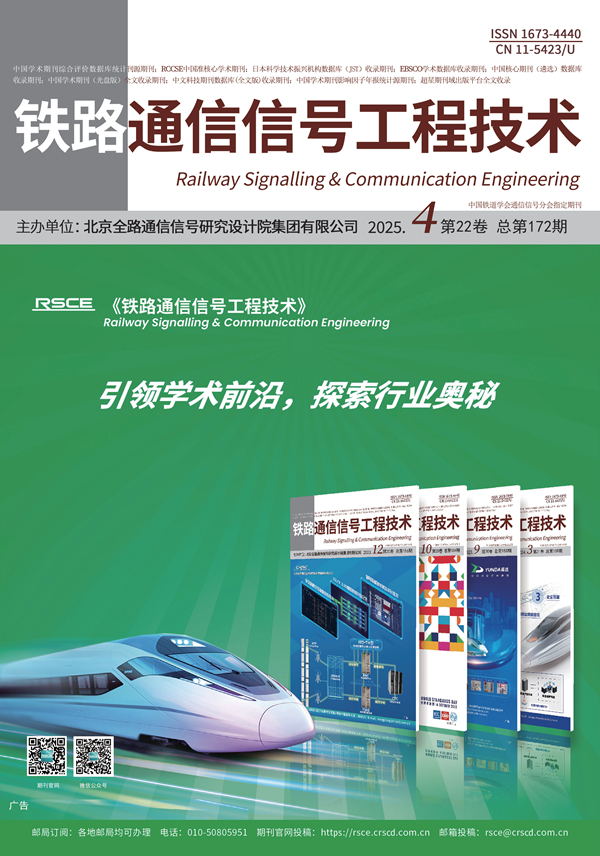
-
月刊
Monthly
-
第22卷 第4期 总第期
-
Vol.22 No.4 S.No.
-
出版:
2025-04-22
-
Published on:
-
创刊:2004 年
-
First Issue: 2004

